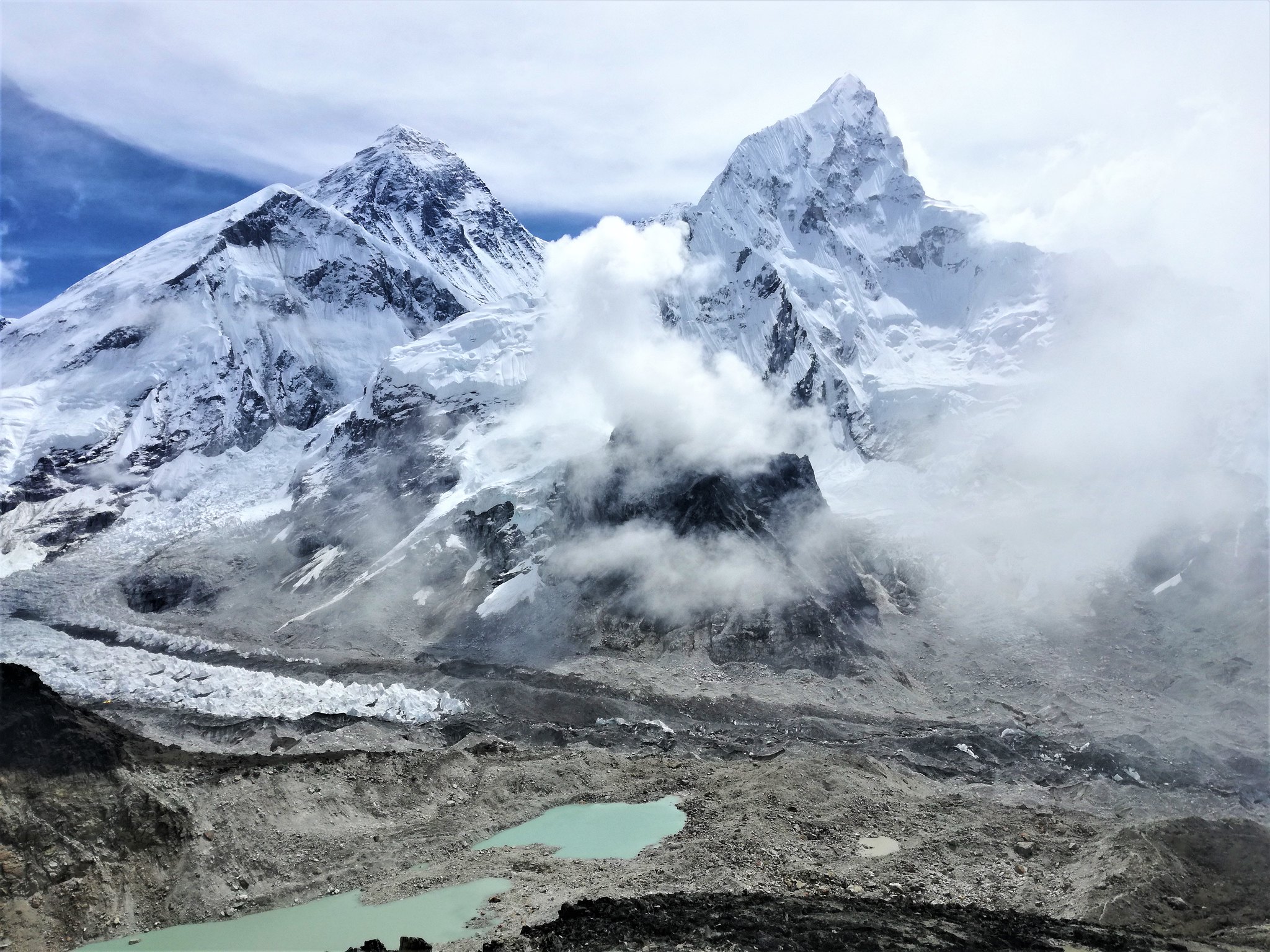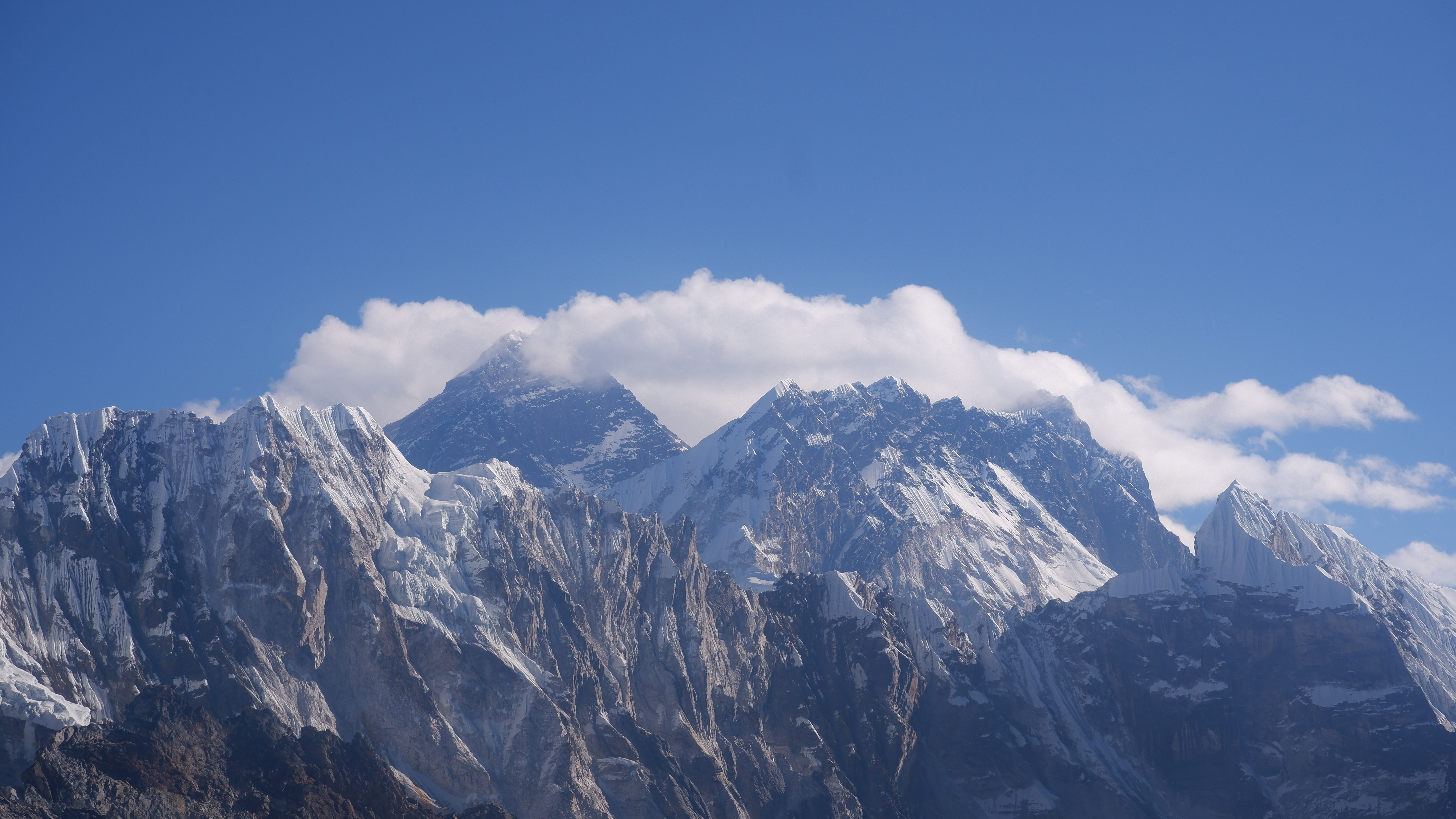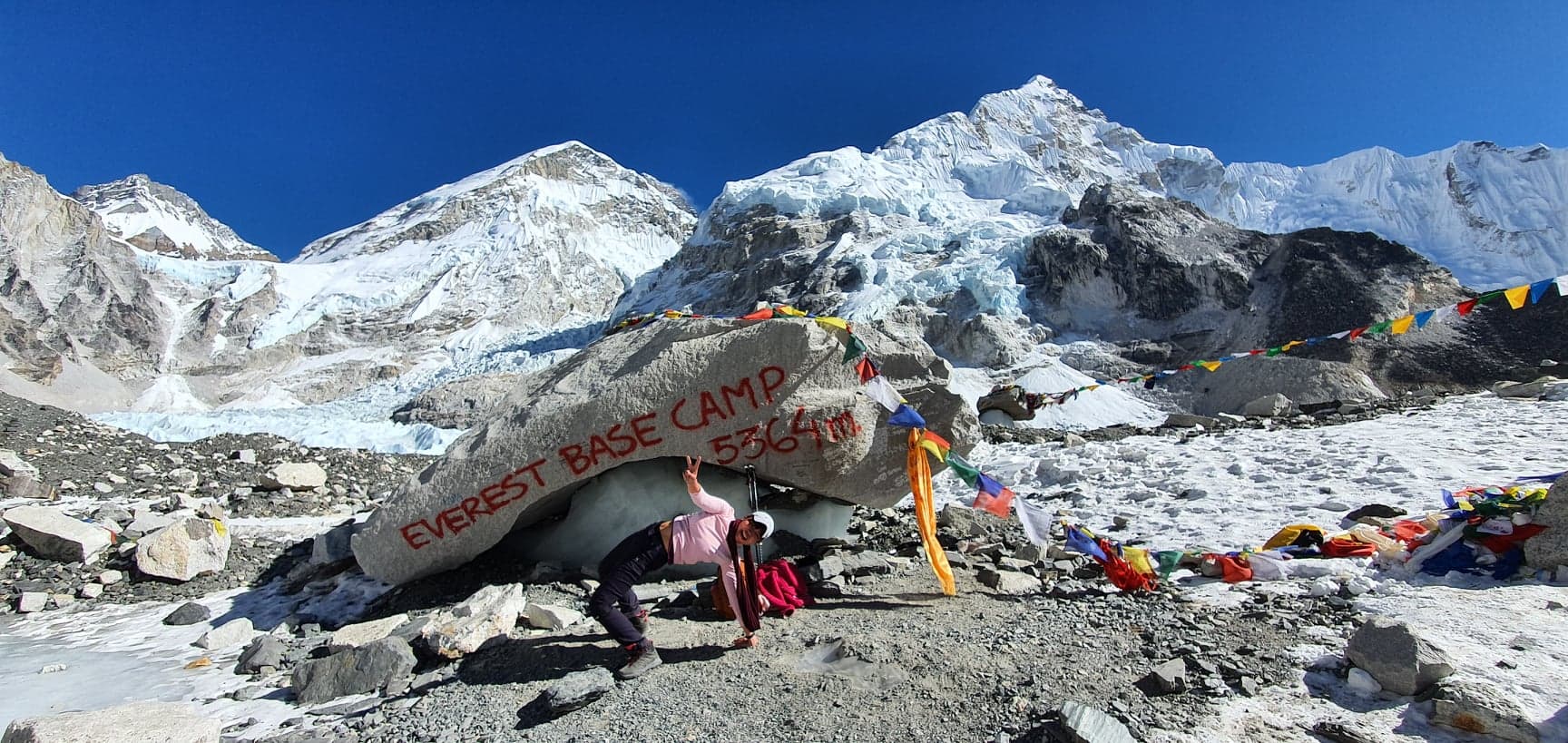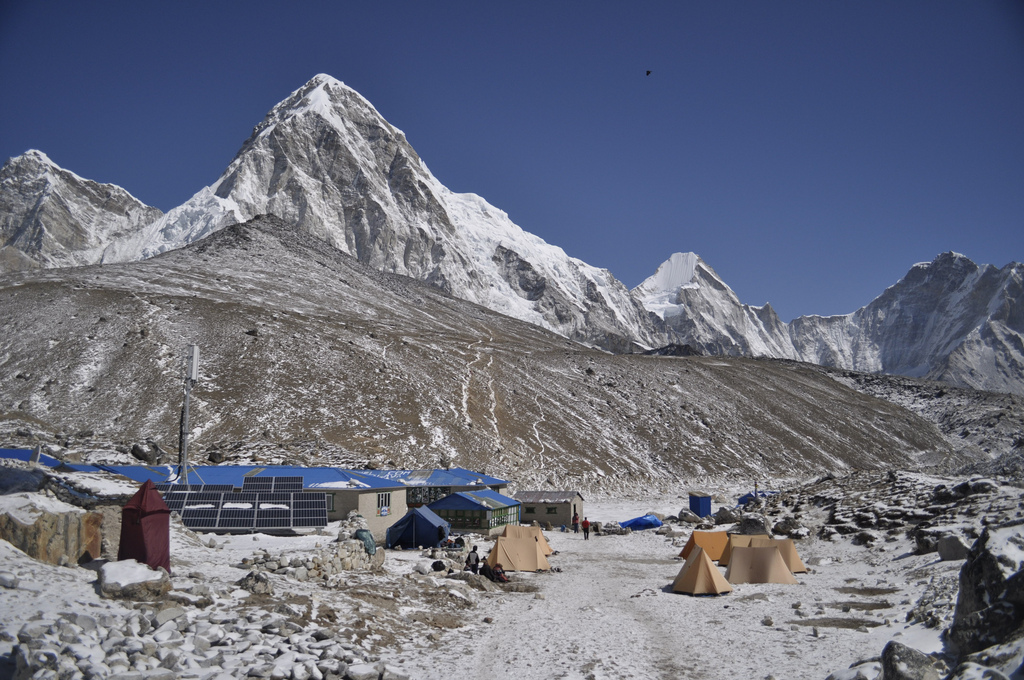Standing right behind Mt. Everest (8848.46m) is an enthralling moment that everyone wants to cherish once in a lifetime! Ardent trekking fanatics widely rank this tremendous trek as the best in the world. While the Everest Base Camp Trek distance can be terrorised at first, with a requisite amount of preparation, it gets appreciably easier to complete the trek.
The entire Trek to Everest base camp distance (Lukla – Everest base camp – Lukla) is 127 kilometres approximately excluding the distances of acclimatization hikes in Namche and Dingboche. Please note that there are various approaches and itineraries for EBC Trek.
Generally, the Mount Everest Trek distance of 130 km is based on the standard itinerary via Namche, Tengboche, Dingboche, Lobuche and Everest base camp. The Everest Trek distance is exceedingly achievable for all people around the globe.
Moreover, the Everest Trek is not only for its highest mountains but for the most challenging element probably getting knowledge of Everest base camp elevation. Kalapatthar- the main highest point of the trek which covers the maximum Everest Base Camp altitude at 5545m. Secondly, the maximum elevation you will gain through the journey of Gorakshep at 5160m.
One of the highest altitude treks is popularly known as Mount Everest Trek altitude adding more challenges to meticulous adventure for a lifetime. Usually, elevation gains will be in the range of 400-800m each day and marshal to mountain sickness can be a major concern for all trekkers.
Most travellers are not used to these altitudes, the trek necessitates acclimatization days and the ascent to Everest Base Camp will occur at a much slower pace than the descent to allow for acclimatization and to guarantee safety.
Everest Base Camp Trek Distance and altitudes are the main points to be considered while soaring the roof of the world for closeup encounters with the highest summits. Hopefully, these facts have assured you to set your trek to Everest Base Camp so far.
Altitude sickness to the Everest Base Camp Trekking Trail.
Trekking to EBC is a mental and physical challenge for all experienced or non-experienced travellers. Taking risks for such things is not applicable because you have to listen to their bodies. For not listening to the group members due to altitude sickness people get very sick (and even die). Get more ideas about altitude sickness and its symptoms so you will know how to identify and tackle them.
Mostly, Altitude sickness transpires when you reach a high altitude too quickly. If you take an ascend, oxygen levels decrease and it takes time for your body to regulate and can’t anticipate these lower levels of oxygen and the symptoms will be seen such as dizziness, headache, shortness of breath and nausea. Anyone can feel above 2,000 meters, don’t let the possibility of altitude sickness dissuade you from hiking the EBC trek! You can minimize the risk of altitude sickness by taking several measures; rest and acclimatization day at higher altitudes zone.

Riding the wave of Elevation
Numerous day-to-day updates noted that while Namche Bazaarsits at 11,286 feet and Tengboche at 12,664 feet, indicating a gain of +1,378 feet, the actual elevation gain along the route, accounting for ups and downs, totals 2,881 feet.
Elevation fluctuations are common on the Everest Base Camp trail, with significant gains even on downhill stretches. Starting from Lukla at 9,318 feet and reaching Everest Base Camp at 17,598 feet, the net gain is 8,280 feet.
However, including acclimatization hikes, the total elevation gain throughout the entire trail amounts to approximately 24,000 feet, triple the expected figure. This insight clarifies the landscape and corrects any misconceptions regarding distances, durations, and elevation gains on the route.
Understanding Distance on the Everest Base Camp Route
Embarking on the Everest Base Camp Adventure: Traverse the Majestic Distance Prepare to embark on an extraordinary journey to the Everest Base Camp, where the total distance covered in this trek is approximately 130km round trip (65 km each way). Over 11/12 days, you will have the opportunity to immerse yourself in the breathtaking surroundings, walking an average of 11 km per day for about 6 hours.
As you make your way through the rocky terrain, navigating switchbacks and experiencing gradual ascents and descents, the pace may be slower, averaging around 2.5 km per hour. Fear not, for this distance is achievable for individuals of all ages, allowing everyone to partake in this remarkable adventure. It is important to note that acclimatization is key when ascending to higher altitudes.
Therefore, it will take approximately 9 days to reach the Base Camp, including 2 days dedicated to acclimatization. The return journey to Lukla, on the other hand, can be accomplished in just 3 days. Prepare to be captivated by the wonders of Everest Base Camp as you embark on this awe-inspiring trek.
Challenge stemming from the distance to Everest Base camp

The Everest Base Camp trek presents adventurers with a moderate challenge, characterized by both the physical demands of the journey and the rugged beauty of the surrounding terrain. As trekkers navigate through the breathtaking landscapes, they are confronted with daily trekking distances that test their endurance and determination, contributing to the overall difficulty of the expedition.
Traversing through the majestic Himalayan region, trekkers find themselves immersed in a landscape characterized by rugged terrain and awe-inspiring vistas. From lush valleys to towering peaks, the Everest Base Camp trail offers a diverse and captivating backdrop for the adventure ahead. However, amidst the beauty lies the challenge, as trekkers ascend to altitudes exceeding 5000 meters, facing the thin air and harsh conditions of high altitude. Uphill climbs and downhill descents punctuate the journey, presenting trekkers with a series of physical challenges to overcome. Steep ridges and narrow trails demand careful navigation and steady footing, adding an element of thrill and excitement to the trek.
At higher elevations, the effects of altitude become more pronounced, with factors such as altitude sickness posing a significant risk to trekkers' well-being. In addition to the physical challenges, trekkers must contend with the unpredictable weather conditions that characterize the Everest region. Rapid changes in weather, including sudden storms and fluctuating temperatures, can complicate the journey and require careful planning and preparation.
Trekkers must be equipped with appropriate gear and clothing to withstand the rigours of the environment and adapt to changing conditions as they progress along the trail. To mitigate the difficulty of the trek, trekkers have the option to customize their itinerary to reduce trekking distances and optimize their travel time.
Starting early in the day allows trekkers to make the most of daylight hours and reach their destinations before nightfall, minimizing the risk of getting caught in adverse weather or challenging terrain. This adjustment is particularly beneficial for novice trekkers, who may require additional time to acclimate to the altitude and pace of the journey.
Additionally, helicopter travel options offer added convenience for tackling the distances involved in the Everest Base Camp trek. Helicopter transfers can be arranged to transport trekkers to and from key points along the trail, providing a faster and more efficient means of travel for those with limited time or physical limitations.
While helicopter travel may come at an additional cost, it offers a valuable alternative for trekkers seeking to maximize their experience and minimize the challenges of the journey. In conclusion, the Everest Base Camp trek offers a rewarding yet challenging adventure through some of the world's most stunning landscapes.
With careful planning, preparation, and adaptation to changing conditions, trekkers can overcome the physical and logistical challenges of the journey and achieve their goal of reaching Everest Base Camp.

challenging trekking distance to Everest Base Camp
A regimen of exercise aimed at trek
The distance of the Everest Base Camp Trek presents a significant challenge, but with a rigorous trekking regimen, it can be overcome. Expect to trek for 7-8 hours daily, demanding top physical, cardiovascular, and mental fitness. An added advantage is better resilience against altitude sickness.
Trekking as a part of a group
Trekking such a considerable distance can be challenging, but the trail offers stunning scenery and ensures readiness for any emergencies. Enjoy the journey through a vibrant atmosphere, benefiting from the camaraderie of a group and experiencing the joy of a trekking adventure.
Essential trekking gear and equipment
Trekking gear is tailored to ensure optimal comfort for all trekkers, enhancing the journey's quality. This specialized equipment significantly reduces the challenges of the Everest Base Camp trek, while also minimizing the risk of injuries such as cramps and blisters.
With proper gear, trekkers can enjoy a safer and more comfortable trek, complementing basic attire with essential items like boots, trousers, and sleeping bags for protection against the cold.
Get experienced guides and porters
A wise step before embarking on the EBC trek is to enlist the assistance of guides and porters. These experts excel in navigation, even in the most remote trails, saving you time, and energy, and shielding you from injuries.
Additionally, they offer first aid for emergencies and ensure your safety along the route. Guides possess invaluable local knowledge, enhancing the enjoyment of your trekking experience and assisting with translation as needed. Porters lighten your load by carrying heavy luggage and backpacks, allowing you to trek through the Everest region with ease and comfort.

Conclusion
The Everest Base Camp trek promises an unforgettable adventure through incredible landscapes and assorted altitudes, covering approximately 130 kilometres round trip with altitudes ranging from around 2,860 meters to 5,545 meters. While physically demanding, the escapade of reaching Everest Base Camp and standing close to the world's highest peak up is just amazing, making it a bucket-list-worthy voyage for many outdoor fanatics.







